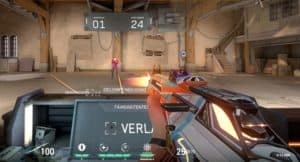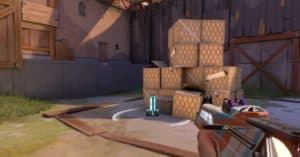If you’ve never played a tactical shooter like Counter-Strike before, getting started with VALORANT will be difficult. That’s why we’ll show you all the basics you need to know.
VALORANT works differently than many players are used to from Call of Duty, Fotnite and Co. The game is slower and more methodical. This is also reflected in the individual mechanics. We have summarized the VALORANT basics for you.
The Movement
If you search for a sprint key in VALORANT, you will not find it. Your movement speed is always linked to the weapon you have just equipped.
For fast rotations over the entire map, it often makes sense to take the knife in your hand, as you are the fastest with it. This also applies when you sneak or duck.
But be sure to have a weapon in your hand if you think you have enemies around the next corner. In an exchange of fire, speed with a knife rarely helps you, as you cannot defend yourself.
If an opponent shoots at you, you will become extremely slow. Reducing your speed when you get hit is called tagging. The system makes it extremely difficult to run away from enemies So don’t get caught by enemies in the open
The weapon mechanics
Unlike other shooters, in VALORANT it usually makes little sense to put your opponents under continuous fire. This is because every weapon has a so-called spray pattern.
This means that your first few shots will always hit relatively exactly where your crosshairs are. But with each additional shot, the impact holes move further and further away from it.
You can compensate this recoil with opposite mouse movements. Usually you have to drag the mouse down to compensate for this. It is best to practice spraying in training camp to get a feel for it.

In general it is of little use to you to shoot in running at medium and long distances. Your shots will only land accurately if you do not move. This does not mean that you should stand still while firing. Keep making lateral movements between shots to remain a hard target to hit.
The Spike
The spike is the element around which each round revolves. The attackers must try to place the spike and then survive until it explodes. That’s why you should never leave it in the spawn as an attacker.
It is usually a good idea to drop the spike before the first contact points. This way, the opposing team won’t know where you’re really going to go on the first contact.
It also makes it easier for your teammates to take the spike to the other half of the map if your first encounter fails.
Once you’ve reached a spot with it, you’ll have to think carefully about where you want to place it, depending on the situation. Could an opponent catch you laying in the middle of the spot? Then you better sit in a safe corner, after all it takes four seconds to place it.
Of course it is easier to defend the spike if it is placed very openly. So if you know that there is no enemy nearby, you can place it far away from any cover. This makes it easier for you in the 45-second afterplant.

Crosshair placement
Especially as a beginner you don’t have the perfect Aim in tactical shooters. You still have to get used to all the remaining mechanics, which is why aiming isn’t quite smooth yet.
That’s why it’s important to maximize your advantage even before the actual firefights. Since head shots cause enormous bonus damage, it is almost never a good idea to aim at the ground.
If you always aim at head height in advance, you will need less time to make the final fine tuning before the deadly hit. You can also quickly develop a good feeling for the right height in training camp.
It is also extremely helpful if you know your way around the maps. If you know every cover and every difference in height, you can aim them more precisely. Therefore it makes sense to walk over a map and look at all the angles even without an opponent.


